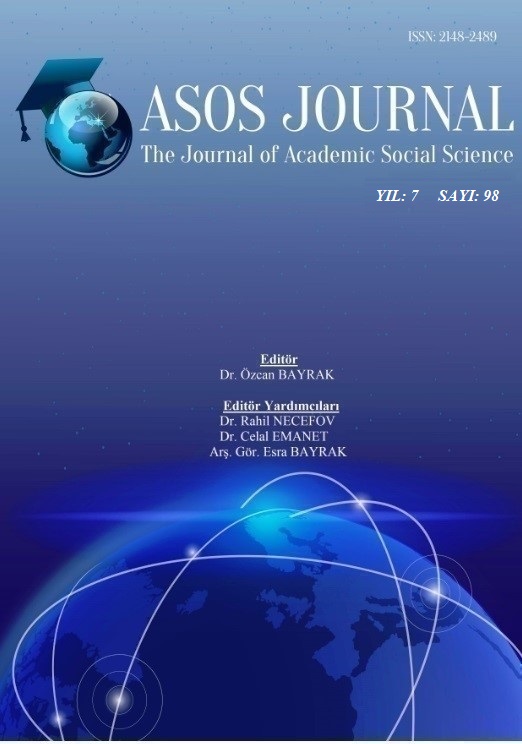Author :
Abstract
Marta ve Lazarus’un kız kardeşi olan Mecdelli Meryem kendini dünyevi zevklere adayıp günahkâr olarak anılmaya başlayan bir kadınken, İsa’yı dinleyerek ve ruhunu arındırarak namuslu bir hayat sürdürmeye başlamıştır. Dolayısıyla Hıristiyan sanatında günahkârlık ve tövbekarlık onun kimliğini belirleyen iki önemli niteliktir. Yuhanna İncil’ine göre İsa’nın çarmıha gerilişinde yanında bulunan Mecdelli Meryem, dirilişinde de ilk göründüğü kişi olarak öne çıkmıştır. Tasvirlerde Mecdelli Meryem’in atribüleri olarak yağ kabı ve uçuşan sarı saçları görmek kaçınılmazdır. Bu çalışmada, öncelikle Mecdelli Meryem’in hayatı kanonik İncil ve onun hakkında yazılmış efsaneler ışığında incelenmiştir ve daha sonra onun hayatına ait her bir bölüm Avrupa resim sanatından farklı dönemlere ait örneklerle desteklenmiştir
Keywords
Abstract
Mary Magdalene, the daughter of Martha and Lazarus of Bethany, as a woman began to be called a sinner devoted himself to worldly pleasures, began to pursue an honorable life by listening to Jesus. Therefore, in Christian art, sinfulness and penitent are two important qualities that determine its identity. According to the Gospel of John, Mary Magdalene, who stood beside Jesus in the crucifixion, came to the fore the first time in her resurrection. It is invetiabla to see a jar or vase of ointment and flowing, long hair as depiction of Mary Magdalene. In this research, the life of Mary Magdalene was examined within the light of canonical Bible and the legends written about her and then each section of her life is supported by examples from different periods of European painting art.
Keywords
- Cross, F. L, (1997), The Oxford Dictionary of Christian Church, Oxford University Press, Oxford.
- Farmer, David Hugh, (1997), The Oxford Dictionary of Saints, Oxford University Press,
- Hall, J., (1974), Dictionary of Subjects and Symbols in Art, Harper&Row Publishers, New York.
- Hunt, Patrick, (2012) “Irony and Realism in the Iconography of Caravaggio’s Penitent Magdalene”, (Ed. Michelle A. Erhardt, Amy m. Moris), Mary Magdalene Iconographic Studies from the Middle Ages to the Baraque, s. 161-186, Boston.
- İncil, (1998), Kitabı Mukaddes Şirketi, İstanbul.
- Livingstone, Elizabeth A, (1990), The Concise Oxford Dictionary of the Christian Church, Oxford University Press, Oxford.
- Morris, M. Amy, (2012) “The German Iconography of the Saint Magdalene Altarpiece: Documenting its context”, (Ed. Michelle A. Erhardt, Amy m. Moris), Mary Magdalene Iconographic Studies from the Middle Ages to the Baraque, s. 75-104, Boston.
- Taylor, Richard, (2003), How to Read A Church, Ebury Press, London.
- Tükel, Uşun, (1993), “Batı Sanatında Maria Magdalena’nın Kimliği Problemi ya da Kutsal Metinlerin Karşılaştırmalı Çözümlenmesi Zorunluluğu”, Sanat Tarihinde İkonografik Araştırmalar Güner İnal’a Armağan, Hacettepe Üniversitesi, s.523-537, Ankara.
- Voragine de, J, (1994), The Golden Legend (Çev. Granger Ryan, Helmut Ripperger),





